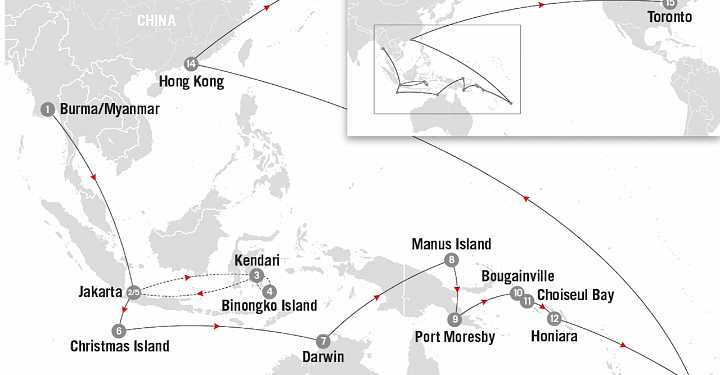#News: Marco Mendicino: How #Canada’s new defence agency will build national strength.
When Prime Minister Mark Carney delivered his landmark address on defence and foreign policy at the University of Toronto’s Munk School last June, he set the tone with a clear charge: “Canadian leadership will be defined not just by the strength of our values, but also the value of our strength.”
It was a call to seriousness. In a world marked by rupture, there springs opportunity. However, sovereignty is safeguarded not by words, but by decisive actions and deliberate choices to protect our nation.
Strengthening Canada’s security requires more than a declaration of our intent. It demands ensuring the Canadian Armed Forces are ready, resilient, and fully equipped. That is precisely the mission of the federal government’s newly launched Defence Investment Agency (DIA).
Incrementalism an Achilles’ Heel
It is no secret that, for years, Canada has lagged when it comes to procuring military assets for the CAF. The subject of numerous independent commissions and parliamentary reports, the systemic barriers standing in the way of defence procurement are well documented.
Acquisitions have been plagued by chronic delays, cost overruns, bureaucratic inefficiencies, and obsolete technology, long after our allies have already moved on to the next generation. This dysfunction undermines our operational capabilities, erodes our credibility, and puts our security at risk.
Despite a clear consensus on the system’s flaws, defence procurement reform has faltered under incremental adjustments rather than decisive structural change. However, the geopolitical landscape is too volatile, and the stakes are too high for half-measures any longer.
The core mission of the defence investment agency
The launch of the DIA is designed to meet this moment. It represents bold, transformational reform that will cut through bureaucratic inertia and deliver capabilities at the speed of relevance. At its heart, the core mission of the DIA is threefold:
Deliver faster, smarter procurement with centralized authority, consolidated processes, specialized staff, and transparent timelines aligned with operational realities.
Build with Canadian industry by tying procurement to a new Defence Industrial Strategy that will prioritize Canadian supply chains, innovation and jobs, and leverage dual-use infrastructure that benefits both the military and Canadians.
Deepen Canada’s defence partnerships with our allies, including in Europe, who possess procurement and manufacturing expertise.
We can no longer afford to tinker at the edges. The DIA’s mission is aimed at rapidly accelerating Canadian procurement to keep pace with modern warfare and unleashing our potential as a country.
DIA as an economic catalyst.
The DIA will not only streamline defence purchasing processes. It will also serve as a catalyst for the Canadian economy. Defence projects will generate demand in shipbuilding, aerospace, critical minerals, infrastructure, AI, technology, and cyber industries. These sectors create high-skilled, good paying jobs, while pulling in buyers to our supply chains.
To lead the DIA, the prime minister chose Doug Guzman, former deputy chair of the Royal Bank of Canada, as the agency’s first CEO. With three decades of business experience, he has the credibility to work with industry leaders and collaborate with defence stakeholders to drive results.
Mr. Guzman’s appointment signals the federal government’s commitment to organizational discipline and execution. The leadership of the DIA will strengthen Canada’s military readiness while harnessing the defence sector as a lever for economic growth.
Trade diversification as a force multiplier
Just as the DIA will partner closely with domestic industry, Canada’s trade diversification strategy will reinforce its mandate by reducing over-dependence on a single market when it comes to the military’s needs.
The United States of America remains Canada’s most irreplaceable ally in defence and security. They are our largest trading partner and an indispensable member of NORAD and NATO. Canadian and American forces share technology, intelligence, and conduct joint operations that protect North America and project strength abroad. We are steadfast in collaborating with our friends to the south of the border.
At the same time, Canada also has deep historical ties to Europe and is strengthening its relationships in the Indo-Pacific. CETA and CPTPP both offer Canadian firms preferred access to global supply chains and export markets that can support the growth of our defence sector.
More specifically, Canada recently negotiated a new security and defence partnership with the EU. Europe offers valuable models, including in the aerospace and shipbuilding sectors, that deliver advanced capabilities that are on time and cost-effective. By further integrating Canadian industry into allied procurement networks, we attract investment, ensure interoperability, and accelerate innovation.
There are many tangible opportunities on the horizon where Canada’s trade relationships will advance the DIA’s mandate by equipping the CAF with goods and services from abroad, while reinvigorating Canadian production in sectors that will fuel long-term growth.
The time is now
In the end, as the prime minister said, Canadian leadership will endure not only because of the values we uphold, but because we have built the strength to defend them.
The DIA is how we do that. The time for half-measures has passed. To build Canada strong, we need to transform defence procurement into a national strength.
The moment to act is now.
















World News on Umojja.com